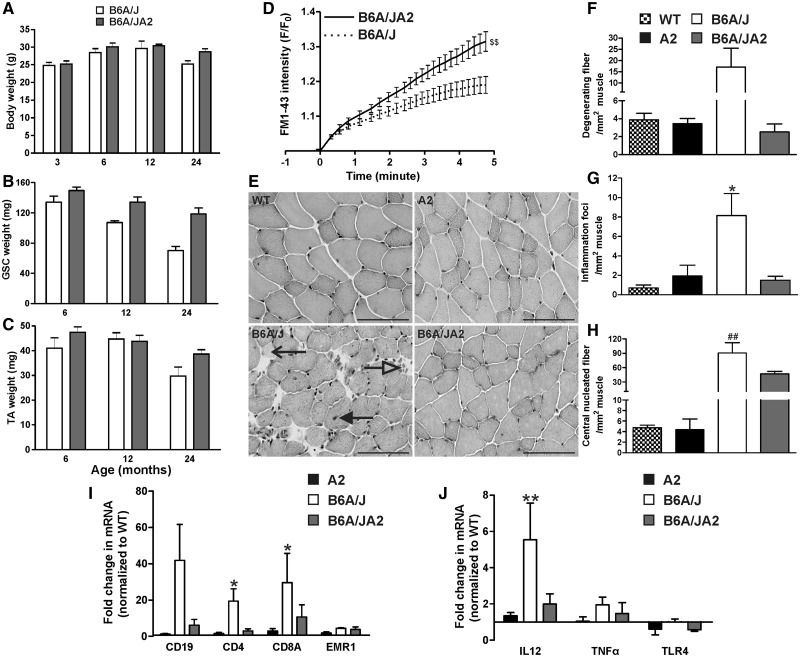Figure 4.
Lack of AnxA2 reduces muscle inflammation in dysferlinopathic mouse. B6A/J and B6A/JA2 mice at 6–24 months of age were assessed for (A) body mass and (B, C) muscle mass (Gastrocnemius, GSC or Tibialis Anterior, TA), as well as (D) the ability of the myofiber from Extensor Digitorum Longus (EDL) or biceps muscle of B6A/J (n = 13 fibers) or B6A/JA2 (n = 15 fibers) mice to repair from laser injury ex vivo. (E) Representative histological images of the haematoxylin & eosin stained EDL muscle cross section from WT, A2, B6A/J and B6A/JA2 at 24-months-old. Scale bar = 100 µm. Number of (F) degenerating muscle fibers (open arrow), (G) inflammatory foci (white arrow) and (H) central nucleated fibers (black arrow) were quantified from entire EDL muscles of WT, A2, B6A/J and B6A/JA2 at 24 months of age (n > 3 animals). (I,J) mRNA expression level (normalized to HPRT and presented as fold-change over the WT) for (I) various inflammatory cell population and (J) genes involved in TLR-signaling response in A2, B6A/J or B6A/JA2 GSC muscle at 24 months (n > 3 animals). All data are expressed as means ± S.E.M. $$P ≤ 0.01 compared to B6A/J by unpaired t-test. *P ≤ 0.05 and **P ≤ 0.01 compared to WT and ##P ≤ 0.01 compared to A2 by Kruskal Wallis test.

